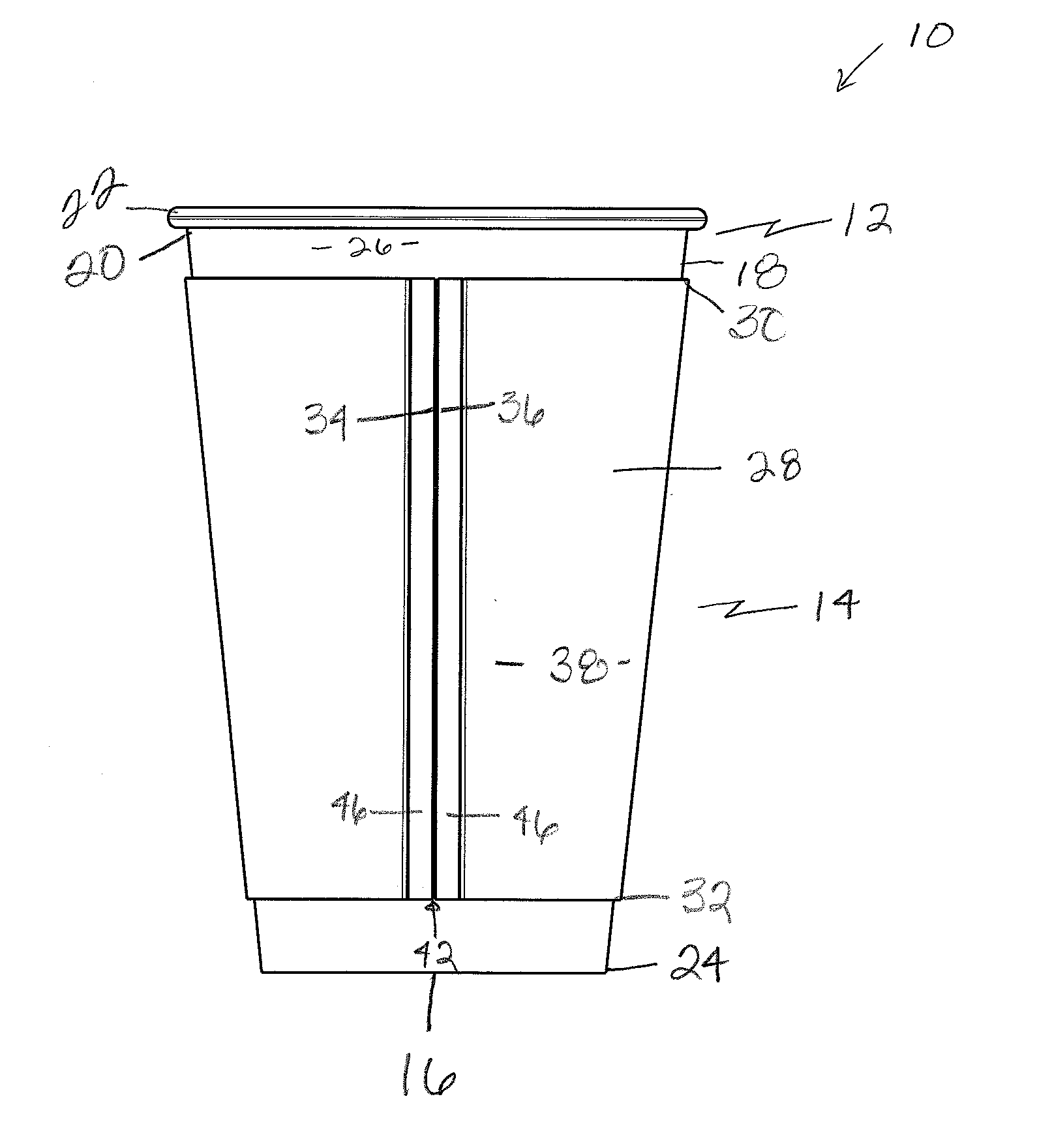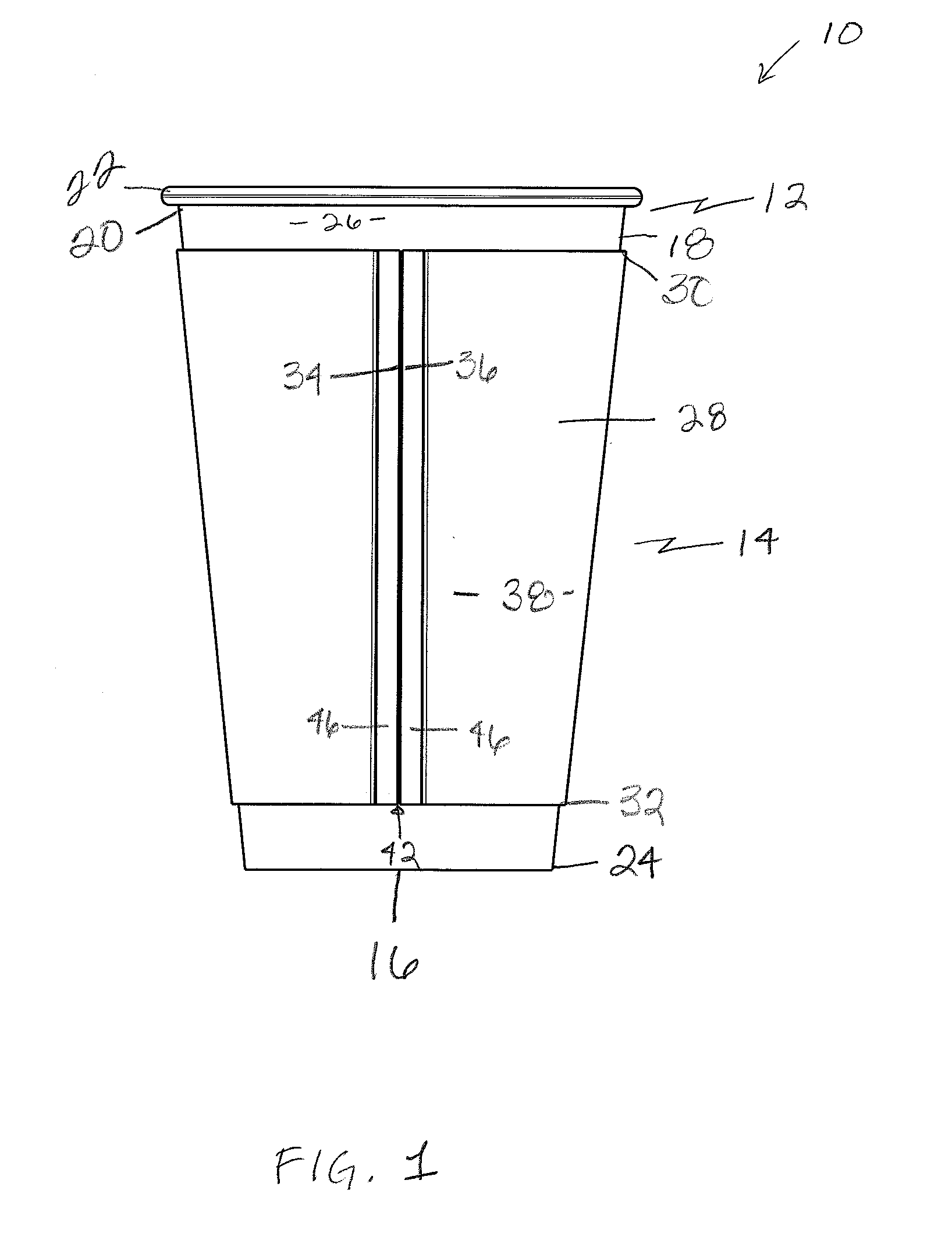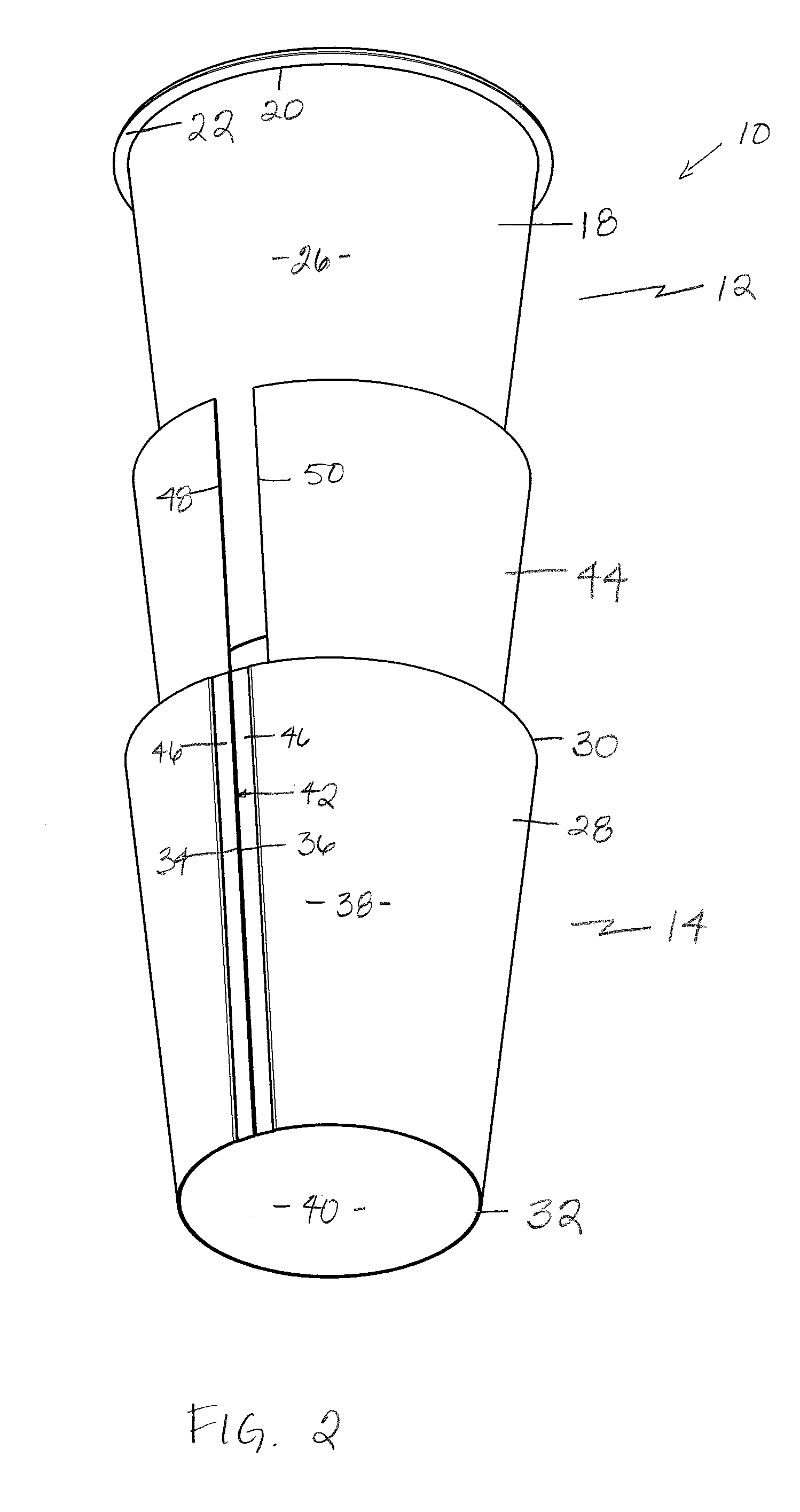Multi-layer heat insulating container
a heat insulation container and multi-layer technology, applied in the field of multi-layer heat insulation containers, can solve the problems of disadvantages of prior art cups formed of paperboard or some other materials, and inconvenient printing of advertisements or logos
- Summary
- Abstract
- Description
- Claims
- Application Information
AI Technical Summary
Benefits of technology
Problems solved by technology
Method used
Image
Examples
Embodiment Construction
[0008]A storage container 10 embodying various features of the present invention is shown in the drawings. In a first embodiment, as shown in FIGS. 1-3, storage container 10 includes a receptacle 12 and an integral sleeve 14 fixedly attached thereto.
[0009]Turning to FIGS. 1, 2 and 3, receptacle 12 has a circular bottom portion 16 and a circumferential sidewall 18. At the top edge 20 of sidewall 18 is a rolled lip 22 to provide a comfortable drinking surface and for attaching a lid (not shown) thereon. Circular bottom portion 16 is defined between a bottom edge 24. Sidewall 18 further includes an inner surface 25 and an outer surface 26. Receptacle 12 preferably has a frusto-conical shape; that is, receptacle 12 has a circular cross-section, and the diameter of bottom edge 24 and bottom portion 16 is less than the diameter of the top edge 20 of sidewall 18. It will be appreciated by those skilled in the art that different shapes may serve equally as well and may be required by a desi...
PUM
 Login to View More
Login to View More Abstract
Description
Claims
Application Information
 Login to View More
Login to View More - R&D
- Intellectual Property
- Life Sciences
- Materials
- Tech Scout
- Unparalleled Data Quality
- Higher Quality Content
- 60% Fewer Hallucinations
Browse by: Latest US Patents, China's latest patents, Technical Efficacy Thesaurus, Application Domain, Technology Topic, Popular Technical Reports.
© 2025 PatSnap. All rights reserved.Legal|Privacy policy|Modern Slavery Act Transparency Statement|Sitemap|About US| Contact US: help@patsnap.com



